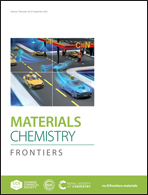Gold nanoparticle-based immunochromatographic assay for the rapid detection of the SARS-CoV-2 Omicron variant†
Abstract
At present, the prevalent Omicron mutant of severe acute respiratory syndrome coronavirus 2 (SARS-CoV-2) has the characteristics of high infectivity and strong concealment, leading to more asymptomatic infections. The advantages of antigen detection are that it is simple simple, fast and convenient for self-detection and as an important supplement to nucleic acid detection; it can further improve “early detection”, screen out possible infected persons at the first time, and help to control the source of infection in real time. In this study, we induced expression and purification to obtain a recombinant nucleocapsid protein (NP) derived from Omicron. BALB/c mice were immunized with NP, and 10 hybridoma cell lines secreting anti-NP monoclonal antibodies with high efficiency were screened and prepared. The best pair, 5B1-4A10, was selected and a gold nanoparticle-based immunochromatographic assay was developed based on the principle of the double antibody sandwich. The limit of detection of the test strip for the recombinant protein was 8 pg mL−1, and for the inactivated virus it was 625 TCID50 per mL. Furthermore, the test strip had no cross-reactivity with human coronavirus and could detect several sub-lineages of Omicron. Therefore, for our assay, antigen determination was fast and accurate, with little need for complex equipment or personnel and was suitable for rapid screening of suspected cases of large-scale Coronavirus disease 2019 (COVID-19) infection.



 Please wait while we load your content...
Please wait while we load your content...